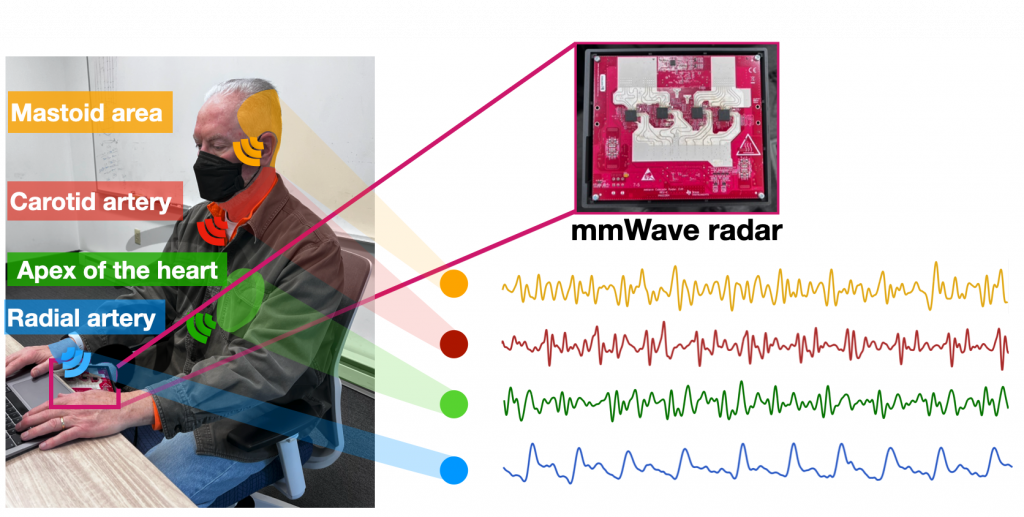MassAITC Cohort: Year 5 (AD/ADRD)

Initial Proposal Abstract: Arterial stiffness is a risk factor for cardiovascular conditions including hypertension, stroke, and coronary artery disease, as well as late-onset Alzheimer’s disease (AD), and can be measured using Pulse Transit Time (PTT), the time it takes for a pulse wave to travel between two arterial sites on the body. PTT is also inversely related to blood pressure (BP), and has been explored as the basis for cuff-less blood pressure monitoring. The ability to contactlessly measure PTT and BP at multiple sites along the body has the potential to enable pre-screening of cardiovascular diseases, and long-term tracking of disease progression, particularly for high-risk populations such as older adults and individuals with chronic diseases such as AD. By monitoring arterial stiffness it is possible to recommend timely interventions including lifestyle (e.g. exercise and diet), and pharmacologic changes (e.g. antihypertensive drugs)
Our single-radar setup consists of a compact array of PCB patch antennas that transmits frequency-modulated continuous wave (FMCW) signals towards a seated individual, and performs fine-grained beamforming on the reflected signal to capture the subtle bodily movements caused by the heart pumping at key arterial sites. Specifically, the system uses (1) seismocardiography (SCG) to measure body vibrations at the chest caused by the heartbeat containing aortic valve opening time, (2) ballistocardiography (BCG) by measuring the mechanical movement of the head caused by the upward recoil from each heartbeat, and (3) displacement at peripheral arterial sites (heart, head, radial, carotid, brachial, femoral, tibial artery) which measures the pulse when it arrives. The system measures PTT as the interval when blood is ejected from the heart (using SCG and BCG) to when it arrives at a peripheral arterial site. Blood pressure can be estimated using a mathematical model of population averages, as well as a one-time calibration using a BP cuff.
The project will (1) Develop hardware setup and algorithms to enable full-body wireless sensing of cardiac signals (2) Evaluate and optimize system performance in a clinical study in diverse populations and (3) Develop smartphone application UI and perform usability testing on participants. We will compare the radar PTT and BP with reference measurements in clinic and in controlled environments and compare their correlations.
